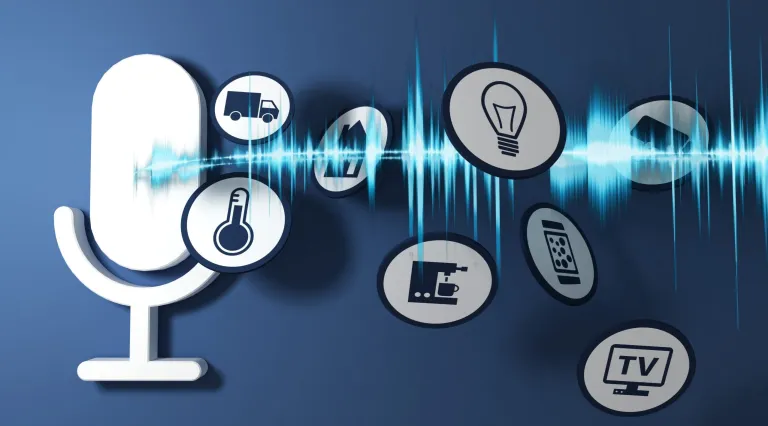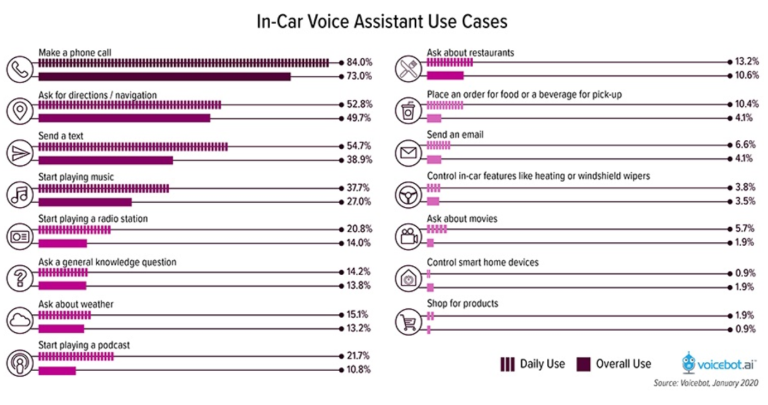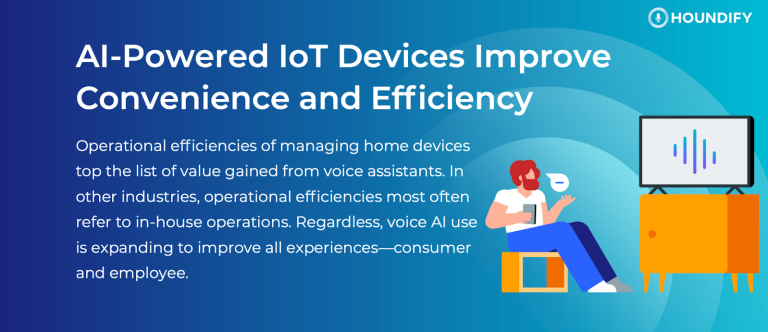The Internet of Things (IoT) and Smart Home industry have experienced exponential growth in the last few years with IoT spending projected to reach $1.1 trillion by 2023, according to Statista. The growth in the number of IoT and Smart Home devices is closely linked to the rapid adoption of voice-enabled smart speakers and voice assistants in a variety of products. Currently, there are 4.2 billion voice assistants in use worldwide and that number is projected to continue to grow.
The need for greater control over customer experiences, ownership of valuable data, and a desire to monetize on the voice experience have prompted companies to rethink their voice assistant strategies and move from intermediated voice experiences to custom, branded voices for all their devices.
Meanwhile, consumers are increasingly demanding convenient, hands-free interactions that make their lives easier. A study by Adobe revealed that 94% of consumers believe voice technology does more than save time—it improves the quality of life. Companies hoping to meet consumer needs, stay competitive, and protect their brand are adding voice AI to their product roadmaps. They are also realizing that adopting a voice assistant strategy requires careful consideration, knowing their “why”, and understanding their customer needs.
Adding a voice user interface to a product or group of products is not accomplished with a one-size-fits-all solution. Voice assistant strategies are as unique as the products and brands that adopt them. While many of the decisions about how and where to add voice to a product will be unique to your brand, there are a few key elements that will determine the level of functionality your voice assistant will provide.
Here are 5 elements of voice AI for IoT devices:
- A choice of connectivity: Embedded, Cloud-only, or Hybrid
- Connectivity to other devices
- Conversational AI for a natural voice user interface
- Specialty content domains for proprietary operations
- Brand identity and the disintermediated voice assistant
1. A choice of connectivity
Based on your product, your customer, and your “why”, developers have a range of connectivity options to choose from. If you’re looking to add functionality and accessibility to our product, an embedded-only solution will give your users a hands-free interface and the ability to perform specific functions—such as making coffee, opening blinds, and setting the temperature—without needing to navigate knobs and buttons.
When the product focus is to provide access to information and entertainment, and command or control functions aren’t a requirement, cloud-only connectivity is the right solution. Smart speakers are a good example of cloud-only IoT devices.
When access to both product functions and the cloud gives the best user experiences, hybrid connectivity solutions provide always-on responsiveness. Hybrid connectivity solutions deliver the benefits of command and control functions as well as access to the cloud, affording users the ability to command their voice assistant to make coffee and reorder their favorite coffee beans from the same device.
Examples of popular hybrid devices are voice-enabled vehicles and TVs. With voice-enabled vehicles, users can command specific embedded functions like changing the temperature in the car, increasing the music volume, and turning on seat warmers. Through cloud connectivity, they can also access navigation, music, food ordering, and their smart home technology, such as lights and thermostats, all hands-free while keeping their eyes on the road.
These in-car amenities are becoming increasingly popular as Statista predicts that 70% of vehicles will be connected to the internet by 2023, and Forbes reports that 129.7 million people use voice AI technology in their cars. These statistics support the assumption that consumers are favoring interactive, accessible, convenient, and hands-free driving experiences that allow them to stay connected to the world around them, including to other IoT devices. Connected cars of the future will create a seamless transition from home to car to work and other destinations as they become one more device in the IoT.










